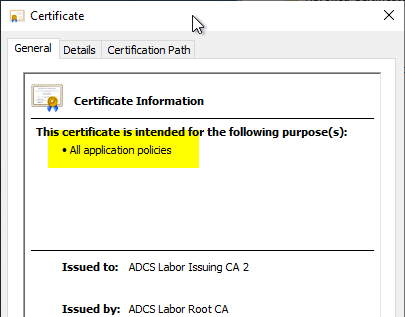As computing power becomes increasingly available, the need to use stronger cryptographic keys also increases. Often there is a need (for example, because the keys have to be protected by a trusted platform module) to use elliptic curves (ECC) based keys to be used. For their use, it is essential that compatibility with the intended use cases is ensured.
Below is a list of use cases for which I am aware of compatibility.
Continue reading „Liste der Use Cases der Zertifikate, für welche die Kompatibilität zu auf elliptischen Kurven (ECC) basierenden Schlüsseln bekannt ist“